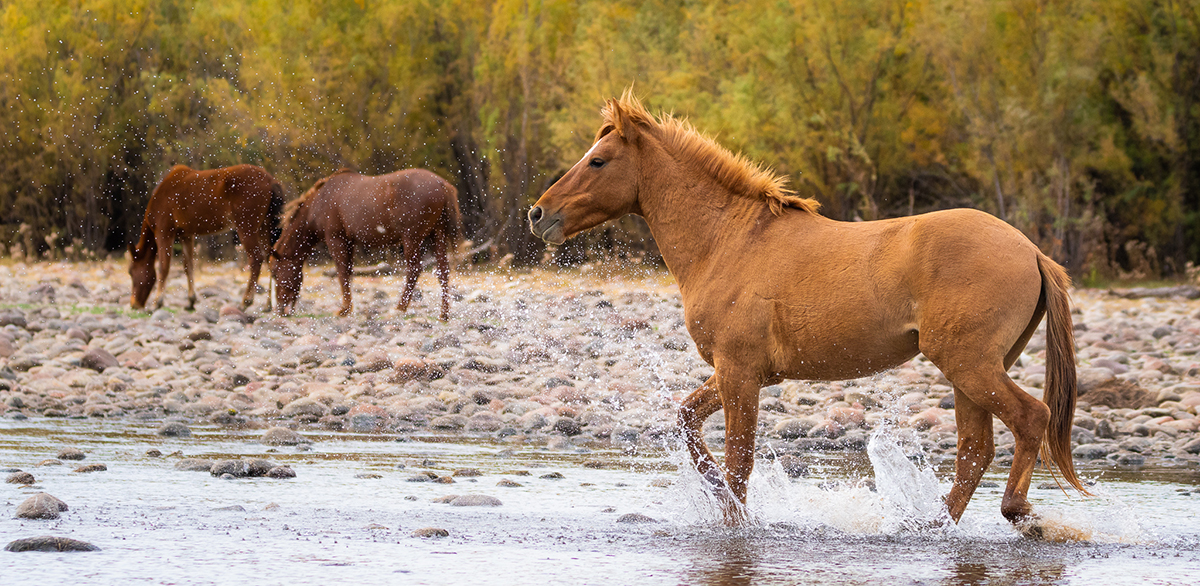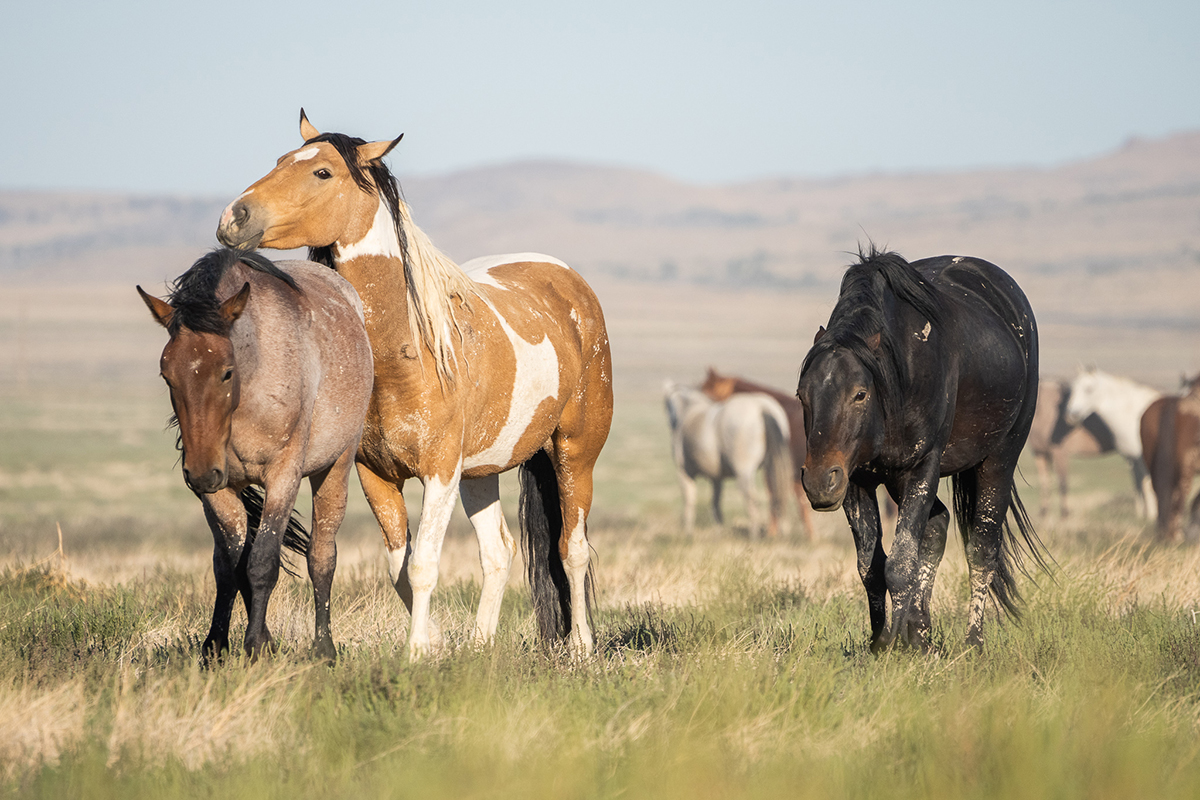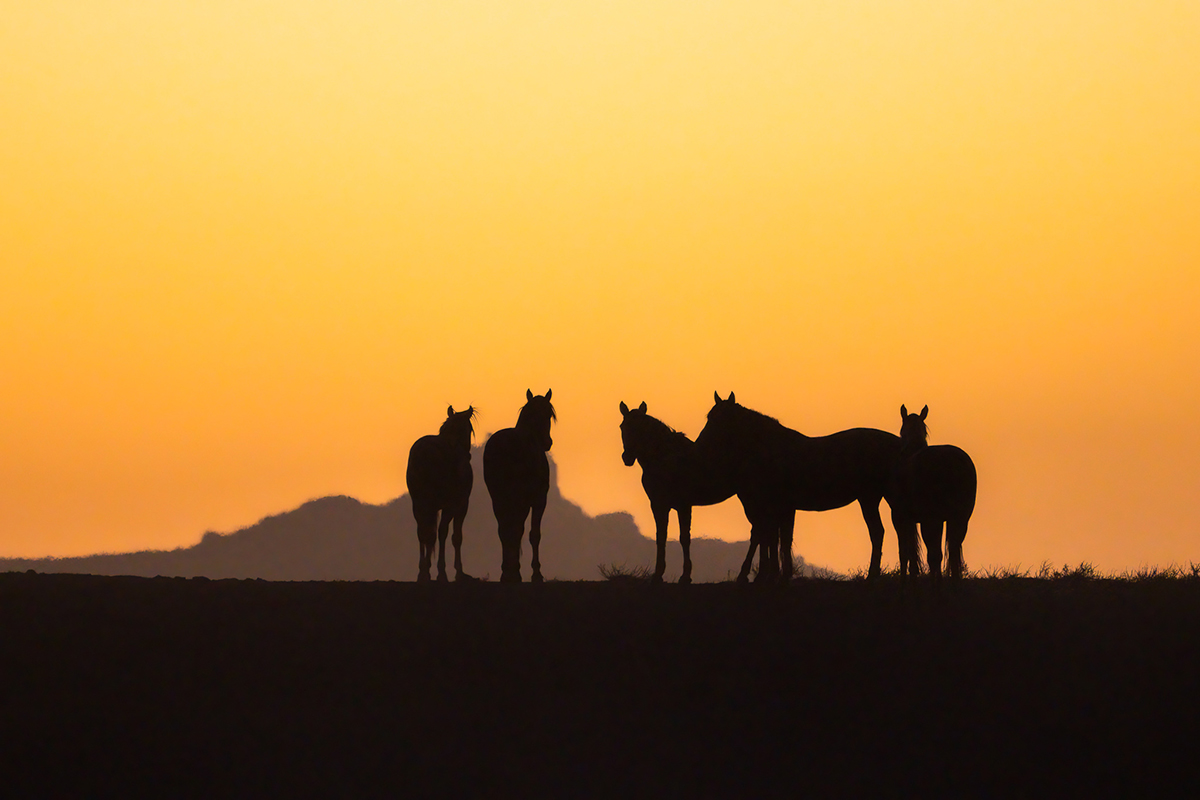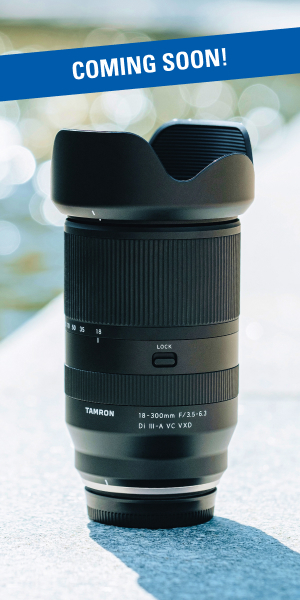Fotografiar caballos salvajes es un reto cautivador que combina la belleza de la naturaleza con la emoción del movimiento indómito. Estas majestuosas criaturas, que deambulan libremente por vastos paisajes, ofrecen a los fotógrafos una oportunidad única de captar la fuerza, la gracia y la libertad en estado puro. Sin embargo, para fotografiar con éxito a los caballos salvajes hay que tener buen ojo, paciencia y el equipo adecuado para adaptarse a movimientos impredecibles y condiciones de luz variables. En este blog, nos adentraremos en las técnicas y ajustes que necesitará dominar, y en cómo los objetivos Tamron pueden ayudarle a conseguir impresionantes tomas de caballos salvajes en su hábitat natural, dando vida a su espíritu y vitalidad.
Imágenes y consejos de Alyce Bender
Por qué los teleobjetivos son imprescindibles para fotografiar caballos salvajes
Fotografiar caballos salvajes requiere distancia y precisión, dos cosas que un fotógrafo de calidad puede hacer. teleobjetivo zoom te lo ofrece con creces. Los caballos salvajes desconfían de los humanos por naturaleza, y acercarse demasiado puede estresarlos o ponerle en peligro. Por eso los teleobjetivos son esenciales para captar imágenes íntimas y de gran impacto sin molestar a la manada.
Opciones de zoom versátiles como el Tamron 50-400mm F/4.5-6.3 VC VXD para las monturas Sony E y Nikon Z, o el Tamron 150-500 mm F/5-6,7 Di III VC VXDdisponibles para monturas Sony E, Fujifilm X y Nikon Z, le ofrecen el alcance necesario para fotografiar caballos salvajes desde lejos sin dejar de llenar el encuadre. Estos objetivos le permiten adaptarse rápidamente a las escenas cambiantes, desde un semental cargando por las llanuras hasta momentos tranquilos entre un potro y su yegua, todo ello sin necesidad de cambiar de objetivo en entornos polvorientos y difíciles.
Su compensación óptica de la vibración (VC) ayuda a garantizar tomas nítidas incluso con la mano en el extremo largo del zoom, y su construcción compacta y ligera los hace ideales para ir de excursión a lugares remotos. Si su objetivo es capturar el movimiento dinámico de los caballos y la esencia de la naturaleza salvaje, un teleobjetivo es su herramienta más poderosa.

CONSEJO 1: Cuidado con las orejas - Lee el lenguaje corporal para fotografiar mejor la fauna salvaje

En la fotografía de caballos salvajes, leer el lenguaje corporal es tan importante como sincronizar la toma. Las orejas de un caballo son el principal indicador de su estado de ánimo y atención. ¿Están relajadas, giradas, echadas hacia atrás por la irritación o atentas al movimiento en la distancia? Estas señales ofrecen una visión del comportamiento antes de que se convierta en acción, lo que las convierte en un recurso inestimable para los fotógrafos. Si vas a fotografiar caballos en libertad, anticiparte a la acción a través del movimiento de las orejas te permitirá preenfocar y encuadrar imágenes más atractivas. Ajusta una velocidad de obturación rápida (1/1250 o superior) y sigue a los sujetos con un teleobjetivo para fauna salvaje, como el Tamron 150-500 mm o el 50-400 mm, para garantizar resultados nítidos cuando se desate la acción.
CONSEJO 2: Los mejores momentos para fotografiar caballos salvajes - Hora dorada y luz suave
El momento oportuno lo es todo en la fotografía de caballos salvajes. La luz suave y dorada del amanecer y el atardecer no sólo favorece el paisaje, sino que también resalta la forma y el movimiento de los caballos salvajes, que se vuelven más activos con temperaturas más frescas. Si vas a fotografiar animales salvajes en regiones áridas como el oeste de EE.UU., estos "hombros del día" ofrecen las mejores condiciones de iluminación y actividad. También es aquí cuando merece la pena utilizar un teleobjetivo para la fauna salvaje: la compensación de vibraciones (VC) de Tamron en objetivos como el 150-500 mm garantiza la captura de imágenes nítidas incluso cuando la luz es limitada y los sujetos están en movimiento.
CONSEJO 3: Captar la historia completa - Fotografiar el comportamiento de los caballos salvajes más allá de las fotos de acción

La fotografía de caballos salvajes es algo más que un espectáculo de alta acción: se trata de contar la historia completa de la vida de la manada. En cada banda o grupo hay momentos tiernos, interacciones tranquilas y sutiles muestras de emoción. Captar estas escenas más suaves al fotografiar caballos en libertad revela las complejas estructuras sociales de la manada y crea imágenes emotivas. Tanto si es la primera vez que fotografía animales salvajes como si está creando una cartera profesional, estos momentos llenos de matices aportan profundidad y diversidad a su trabajo.
CONSEJO 4: Utilice teleobjetivos para fotografiar caballos salvajes con seguridad y eficacia
Un zoom de largo alcance es crucial para fotografiar caballos en libertad de forma segura y respetuosa. Los caballos salvajes suelen ser escurridizos y se mueven rápidamente por terrenos escarpados, a menudo interponiendo barreras naturales -como agua o artemisa- entre ellos y los observadores. Aquí es donde resulta esencial un teleobjetivo para fotografiar la vida salvaje, como el Tamron 50-400 mm o el 150-500 mm. Estos objetivos permiten mantener una distancia respetuosa y, al mismo tiempo, lograr composiciones bien encuadradas, tanto si se trata de aislar a un solo semental como de fotografiar una manada de caballos. Su diseño resistente al polvo y su tamaño compacto los convierten en herramientas ideales para fotografiar en los impredecibles entornos en los que se mueven los caballos salvajes.
CONSEJO 5: Contraluz y siluetas: crea imágenes artísticas con una luz espectacular

Fotografiar la vida salvaje al atardecer puede producir algunas de las imágenes más icónicas y artísticas de tu portafolio, especialmente con caballos salvajes. La retroiluminación de estos majestuosos animales crea siluetas impactantes que resaltan sus poderosas formas. Dado que los caballos tienen un perfil tan universalmente reconocido, las siluetas resuenan profundamente tanto entre los entusiastas de la vida salvaje como entre el público en general. Tanto si estás creando una colección para imprimir como si capturas imágenes para uso editorial, utiliza tu teleobjetivo para la fauna salvaje para comprimir la escena y realzar el dramatismo. Exponga para el fondo, deje que los caballos caigan en la sombra y observe cómo un momento sencillo se convierte en cinematográfico.
Conclusión: Mejore sus imágenes de la vida salvaje con el equipo y el momento adecuados
Fotografiar caballos salvajes es una tarea gratificante que combina paciencia, habilidad y las herramientas adecuadas. Desde la lectura del lenguaje corporal hasta la captura de siluetas en la hora dorada, todos estos consejos están diseñados para ayudarte a crecer como fotógrafo de fauna salvaje, especialmente cuando trabajes en el dinámico mundo de la fotografía de manadas de caballos. Si eliges el teleobjetivo adecuado para la naturaleza, como el Tamron 50-400 mm o el 150-500 mm, estarás mejor equipado para documentar el espíritu y el movimiento de los caballos salvajes desde una distancia segura y creativa. Tanto si te estás iniciando en la fotografía de animales salvajes como si estás perfeccionando tu técnica, estos consejos profesionales te ayudarán a contar historias más fuertes y auténticas desde la naturaleza.
Infórmese sobre estas lentes y más en un distribuidor autorizado Tamron en su zona o visite la Tienda TAMRON hoy.
